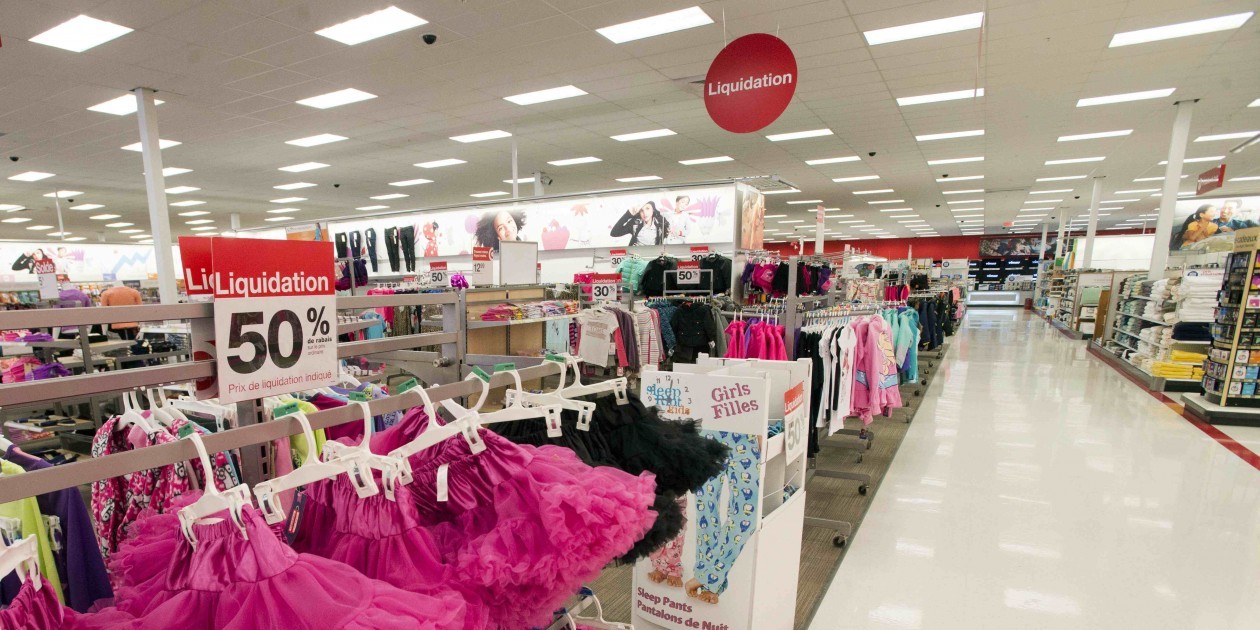Target’s decision to tuck its tail and run out of Canada means billions in sales will soon be up for grabs — but retailers now face a flood of cheap merchandise and fire-sale prices in the market as the U.S. retailer empties its shelves.
Before Target turns out the lights at its 133 locations in Canada it has to liquidate its stores. Even with the famous bare shelves that permeate the department-chain’s stores, that’s still a lot of merchandise to move and in the short term that could pinch some Canadian retailers further.
“Long term, $2 billion is up for grabs,” said Ron White, founder of the luxury shoe retailer that bears his name. Target’s departure will eventually send shoppers elsewhere and retailers will happily cater to them. But in the meantime, the liquidation process “has to be taking a bite out of people’s business in the short term.”
According to Toronto retail consultant Doug Stephens, chains like Giant Tiger, Winners and Hudson’s Bay could feel the short-term pain as Target sells off its stock. In 2014, Target reportedly sold US$1.3 billion worth of goods, including US$623 million in the most recent quarter.
As White pointed out, people tend to buy for an immediate need, but the liquidation process gives those consumers a chance to stock up on items they might not have purchased until later in the year. That’s going to steal sales away from other retailers for at least the first quarter and possibly longer, warned White, who has not had any direct business dealings with Target. While few retailers have commented publicly, White said the chatter within the retail community has been intense.
While White wasn’t shocked by Target’s decision to abandoned Canada, he said he couldn’t help but feel sympathetic. For all the criticism the company faced, he feels the focus on pricing and product selection being different then its U.S. stores wasn’t entirely fair. If you were to compare the Canadian operations of Sears or Walmart to their U.S. stores, White believes you’d find similar discrepancies.
When it comes to pricing, White added, it’s nearly impossible for Canadian retailers to line up with the U.S. He draws an example from his own experience in selling women’s boots. In his experience, the federal duty at the border plays a significant role in higher prices in Canada. “Right off the bat women’s boots are 18% more, and that has nothing to do with the retailer,” he said.
Though many expected Target to change the retail landscape in Canada, the company’s exit may have the more pronounced effect. When Zellers closed property owners didn’t have to worry about filling the space, as Target was already planing to move in, which enticed many smaller retailers to stay put. Now with no obvious tenant to fill these cavernous spaces some of these properties could sit vacant for a while.
To Mark Satov, founder of Satov Consultants, that’s not necessarily a bad thing. “We may have a healthier retail scene if some don’t get taken,” he said. “I’m not in favour of continued retail proliferation because I don’t want to see a glut of retail space like they have in the U.S.” Too much retail space he argued, diffuses sales.
Target clearly wasn’t being productive with its space; this will create an opportunity for another player to make better use of it. “It’s not like Target operated in a space or a segment that nobody else did,” said Satov. “and now others can fill it.”
This article originally appeared on CanadianBusiness.com.










